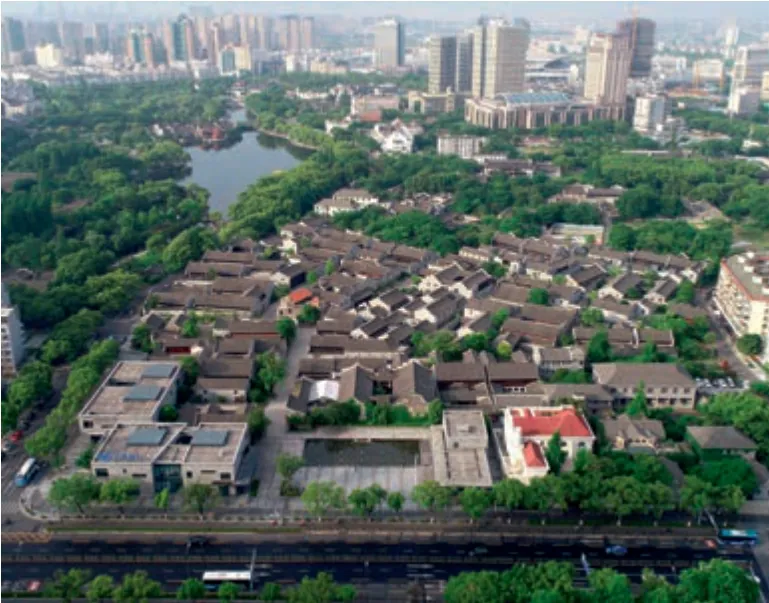月湖历史地段保护与再生设计,宁波,中国
2019-11-26建筑设计常青
建筑设计:常青

1 屠氏别业夜景/Night view of Tu's House
宁波的月湖西区是老城保留下来最重要的历史文化街区, 2009-2011 年由于失当的处置方式,月湖西区北片的传统街巷和风貌建筑被大量拆除,只残留下一些挂牌保护的历史建筑。此举遭到了宁波民间有识之士的强烈质疑,国家主管部门也责令“亡羊补牢”,限期恢复。2012 年,同济大学历史环境保护与再生领域的规划与建筑团队承担了该项艰巨任务,并与相关单位全程配合,监控了工程的进度和质量。
经过现场踏勘,我们发现拆下来的构件大都保留着,存在大部分的恢复、局部新建的可能,是典型的“城市修补”工程,于是重做了保护规划。首先,坚持以原址、原貌、原材料为基调,并充分利用原构件,复建被拆建筑,恢复街区空间结构和肌理,适度调整街区内的旷奥关系;其次,谨慎处理街区边缘的城市界面,在濒临城市干道中山路的街区边缘,以徽式马头墙混交吴式观音兜的“屠氏别业”,因其前面低质的当代临街商业建筑亦被拆除,而裸露在城市空间界面上。
为此,我们做了两个空间界面的重塑方案。其一为广场方案,屠氏别业两侧的新建筑用老建筑的清水砖墙“面料”,二者天际线轮廓新平旧仄,形成一种互涵对比,既有原型意象的类似性特点又有一定反差关系。其二为内庭方案,沿着中山路做出新建筑,补上城市界面,与屠氏别业围合成内庭院。结果前者被选为实施方案,竣工后以“金融小镇”的功能定位尝试了适应性再生。□
The Moon Lake Historic District is located in the southwest of the old Ningbo City. It is centred by an artificial lake first dug in the Tang dynasty (AD 618-907). This area is popularly known as the "cultural centre of eastern Zhejiang".
In 2009, the implementation of a completed conservation plan aroused general dissatisfaction among the local community. The main concern about the plan focused on three points:
(1) The historical urban fabric was radically changed by the proposed wide roads and large-scale new buildings; (2) A great number of traditional courtyard houses were demolished (including 13 designated heritage buildings), disregarding the regulations set in the conservation plan; (3) The local inhabitants were moved out to make space for a gentrified residential area.
In 2011, the original conservation plan had to be abandoned because of public protests. In the following two years, our research team conducted a detailed site investigation. We completed seven research reports and two design schemes to resolve the problem caused by the improper treatment of the historical, physical, and social fabric. The design concepts are summarised as follows:
(1) To respect history, accept reality, and achieve a balance between the interests of various parties.
(2) To provide an appropriate proportion of residential, commercial, and public space respectively and achieve a balance between economic, environmental and social interests.
(3) To preser ve the sur vived historic architecture, repair or reconstruct the demolished heritage architecture by "putting new wine in to old bottles", and create new architecture and functions based on a comprehensive understanding of the historical streetscape and urban environment.□

2 街区复建后鸟瞰/Aerial view after renovation

3 街区再生总平面/Block regeneration site plan

4 与古为新的入口广场建筑/Co-existence of old and new among entrance square buildings
